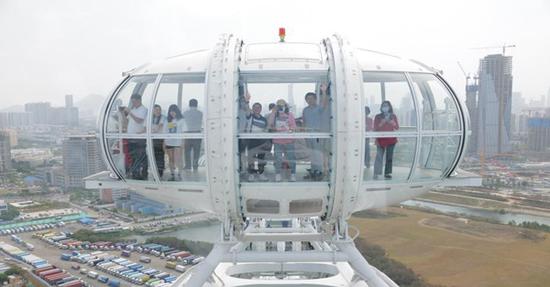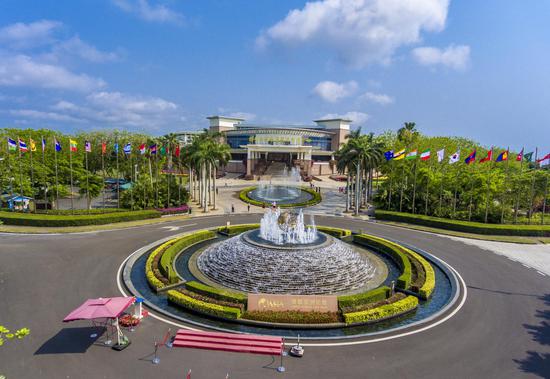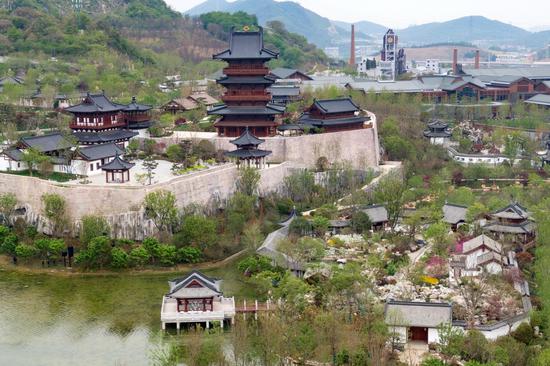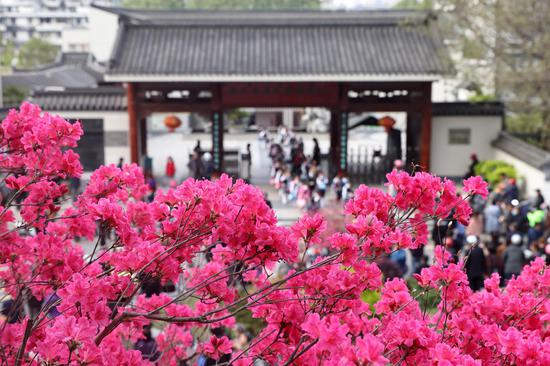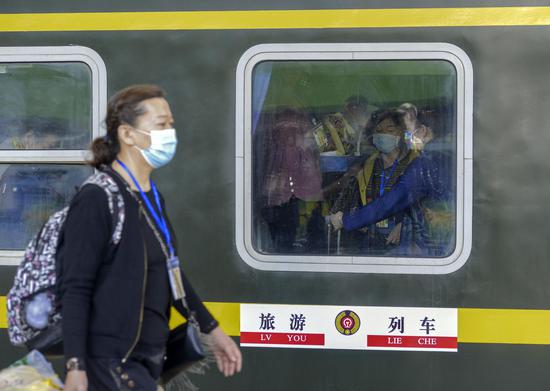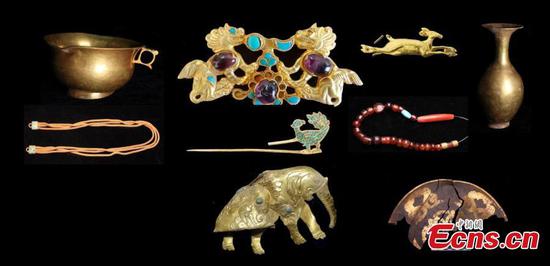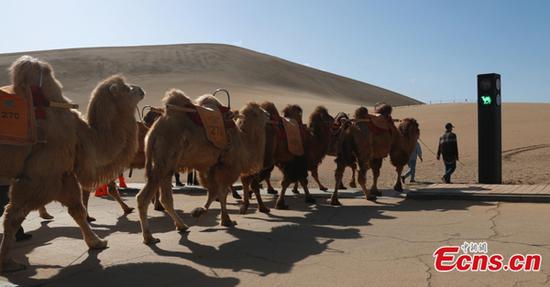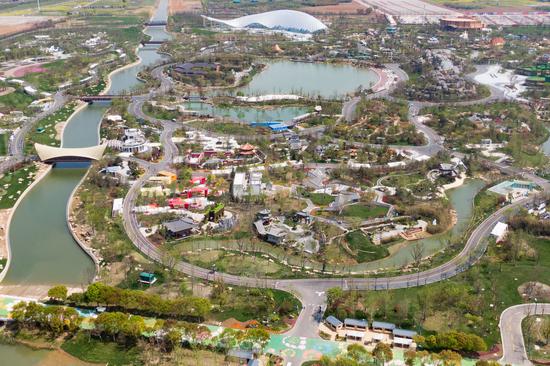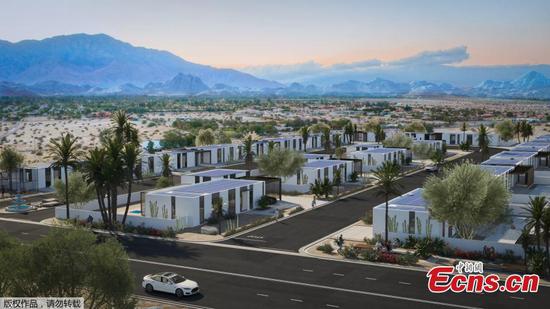
Railway tracks are laid on the Yuxi-Mohan section of the China-Laos railway in Yunnan province in April last year. [Photo by Li Ming/For China Daily]
On the frontline
Yunnan, which borders Laos, has been on the frontline of exchanges between the two nations as well as other member countries of the Association of Southeast Asian Nations, or ASEAN.
From January to October 2019, investment between Laos and Yunnan reached 6.54 billion yuan, while cross-border trade rose by 32 percent year-on-year, according to Vientiane Times.
Despite the economic downturn triggered by the pandemic, Chinese investment in Laos reached $1.16 billion in the first 10 months of last year, a year-on-year rise of more than 20 percent.
Before the pandemic emerged, trade between the two countries stood at $3.92 billion in 2019, which Jia said was a big improvement, adding that there is still huge potential for expansion.
"If we compare this figure with those from other countries trading with China, it's not so big. There appears to be huge potential for China-Laos trade cooperation. The railway may help take bilateral trade to a higher level," he said.
Since December, China has implemented zero tariffs on 97 percent of goods imported from Laos.
Last year, China and ASEAN countries signed the Regional Comprehensive Economic Partnership, which is expected to boost mutual trade and investment, along with economic integration.
Song said the cross-border railway is also in line with the Laotian government's strategy of transforming the landlocked country into a land-linked economy.
With a population of more than 7 million, Laos is the only landlocked country in Southeast Asia, with the majority of people depending on agriculture-mainly growing rice.
Lying at the heart of the Indochinese Peninsula, Laos is bordered by Myanmar and China to the northwest, Vietnam to the east, Cambodia to the southeast and Thailand to the west and southwest.
Over time, being landlocked has been regarded as a disadvantage. Such countries are cut off from marine resources such as fishing, and more important, have no access to seaborne trade, which comprises a large proportion of international trade.
"Being landlocked, Laos has lacked the advantages of seaport logistics," Song said.
The Laotian government has been determined to overcome the country's geographical limitations by promoting the concept that Laos acts as a land bridge, providing the most direct overland transportation routes between its coastal neighbors.
Laos also sees the BRI as an opportunity to build a modernized rail route to catch up with rapidly evolving global changes.
According to the World Bank report, the cross-border line could provide Laos with a link to global supply chains, making the country more attractive to investors.
"Transit trade through Laos along the railway corridor could reach an estimated 3.9 million tons per year by 2030, which would include a shift of an estimated 1.5 million tons of trade from maritime transport to the railway, " the report said.
"If Laos implements logistics and trade facilitation reforms, the railway could attract traffic currently using maritime and air routes. It could reduce land transport charges by 40 percent to 50 percent between Vientiane and Kunming, and by 32 percent between Kunming and the port of Laem Chabang in Thailand."
The new line is also an important section of the pan-Asia railway network, which in turn forms part of the Trans-Asian Railway, a wider plan drawn up in the 1960s with the aim of creating an integrated rail freight network across Europe and Asia.
However, international conflicts and political strife in the Cold War era meant that regional railways remained fragmented, and there was no way to launch such a huge project.
In 2006, the idea was revived and formalized when a total of 18 countries in Asia and Europe signed the Intergovernmental Agreement on the Trans-Asian Railway Network under the auspices of the UN's Economic and Social Commission for Asia and the Pacific.
With the aim of promoting better economic and social integration between Asia and Europe, the agreement took effect in June 2009. The BRI has accelerated implementation of the plan.
The pan-Asia railway network in Southeast Asia, one of four routes on the Trans-Asian Railway, connects Kunming, the Thai capital Bangkok and Singapore.
There are three main routes from Kunming to Bangkok: via Vietnam and Cambodia to the east; the central route via Laos; and the western one via Myanmar.
Crucial for connecting China and Thailand, the China-Laos railway is expected to inject new life into Southeast Asia as a whole.
Jia, from the Chinese Academy of Social Sciences, said it will set a good example for construction of the pan-Asia railway system.
If the China-Thailand railway proceeds as planned in coming years, it will form the central line of the Southeast Asian network, expanding trade and people-to-people exchanges between China and ASEAN nations, Jia added.











